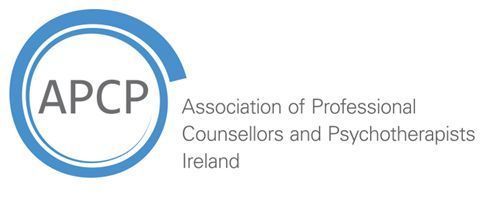Automatic Negative Thoughts (ANTS)
Every day, we have thousands of thoughts. And the majority of these ideas are unpleasant, random thoughts that appear out of nowhere. They have a tendency to flood our minds and make any scenario appear worse than it is. ANTs, or automatic negative thoughts, are the name given to these unintentional thoughts.

What are ANTs?
ANTs are classified into nine types:
1. All or Nothing Thinking
This sort of ANTs, can also be known as polarised thinking, splitting, or black or white thinking, indicates a tendency to think in extremes - everything is either good or bad. All-or-nothing mentality is common in perfectionists who have unreasonable expectations of themselves. And if their performance isn't ideal, they tend to be critical of themselves and perceive themselves as failures.
2. Generalising
You might have a tendency to interpret a single unfavourable occurrence in your life as a recurring pattern. Constant thinking is another term for this instinctive negative thought. If you fail a test once, you may begin to believe that you will constantly fail, as if you have no control over your actions or behaviours. This is a cognitive error that can result in despair, panic attacks, and agoraphobia symptoms.
3. Concentrating on the Negative
A proclivity to view only the negative in any scenario. You have a tendency to overlook the positive sides of any given circumstance.
4. Feelings-Based Thinking
"I have a feeling this is true." When you have a sensation about something and instinctively assume it is correct, you are thinking about your feelings.
5. Beating Guilt
Excessive guilt is used to regulate behaviour and thinking in terms such as "must," "should," and "have to." "Shoulds" and "musts" lead to unreasonable and unrealistic expectations from oneself and others. This, in turn, frequently leads to disappointments, which can cause tension, worry, and depression symptoms.
6. Labelling
Making broad assertions about yourself or others based on situational behaviour, or using harsh adjectives to describe yourself or others, such as "I am a failure," "he is a liar," and similar phrases. To overcome this cognitive distortion, you must challenge yourself to locate data that contradicts your categorization.
7. Fortune Telling
Predicting the worst even when you don't know what will happen is an example of fortune-telling ANTs ("I saw a little lump in my armpit. I definitely have cancer"). This sort of ANT commonly overwhelms those who have panic episodes.
8. Mind Reading
Jumping to conclusions, often known as mind reading, occurs when you believe you know what other people are thinking or feeling without them telling you. This type of mind reading frequently causes problems in relationships since we predict how others will react to us.
9. Blame
Because you tend to blame others for your troubles, this ANT makes you feel like a victim. One of the most dangerous cognitive illusions is blaming others for your shortcomings while accepting no responsibility for your own behaviour.
How to Confront ANTs
1. Recognize the thought
The first stage is to identify when thoughts occur. Although they are internal ideas, it is useful to recognise them in the third person. We all have distinct thinking voices in our thoughts. You can imagine this negative, nagging voice as an ant, a bully, a monster, or a person in your life who wasn't always kind to you. Would you let someone else speak to you in the same way that the ANT does? Stand up to the ANTs and refuse to let them control your life. By distancing yourself from the concept, you put yourself in a better mental position to tackle step 2:
2. Question the Thought
Once you've identified the ANT, ask yourself if it's true. Some ANTs are absolutely untrue (learn about "cognitive distortions" here), and you don't have facts to back up your belief. If this is the case, keep reminding yourself of it until you begin to notice evidence that contradicts the ANT.
3. Gain Perspective
Thoughts are simply that: thoughts. Thoughts. Every day, we have thousands of thoughts. Have you ever observed that you give different thoughts varying degrees of weight or attention? If you suffer with ANTs, you probably give them greater weight and attention. Some of the ANTs may be correct. You may have had times in your life when you wished you had done things differently or made other decisions. This is about the weight and importance you place on such thoughts. Consider a 10-point scale. Do you give a thought the weight of an 8-9 when it merits a 3-4? If this is the case, your guilt and dread may be blocking you from making the desired adjustment. Changing your perspective will help you cope with the ANTs.
4. Replace the Thought
It's now time to convert your ANT into a PAT (positive and affirmative thought). This isn't about flippant, unrealistic statements. It's about replacing the unreasonable negative thought that you've realised is overblown or inaccurate.
Examples
"I'll never get that job, so why bother trying?" becomes "I'm good at the skills they're looking for, so I'm a likely candidate".
"Why would anyone like me if I'm annoying?" becomes "I have several close friends, and I don't have to be perfect to be likeable".
"Life isn't fair, and I'm never satisfied." can become "Life isn't fair, and sometimes I get my way: here are some examples,".
"Something horrible will happen" or "It's always the case" can become "Bad and good things happen" or "I don't enjoy it when awful things happen, but I've proven that I can deal with them".
Next time you see an ANT, recognise it, challenge it, and turn it around. By doing so on a regular basis, you will deprive the ANTs of their influence, allowing you to gain control over your emotions and, ultimately, the confidence to thrive.






